By MEE Staff

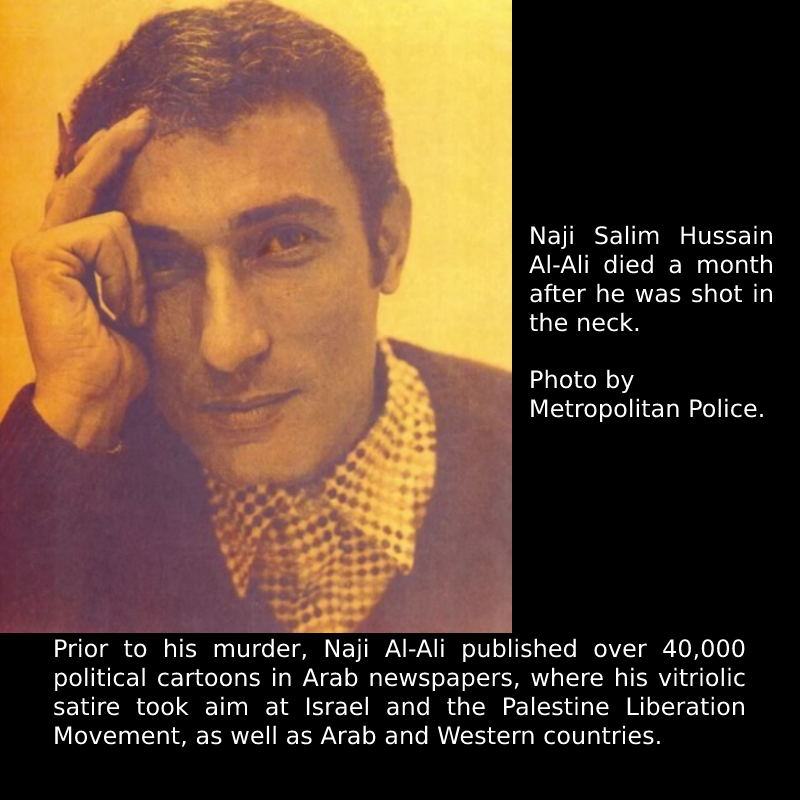
On 22 July 1987, at least one gunman opened fire on the Palestinian cartoonist and activist Naji al-Ali outside the London office of the Kuwaiti newspaper Al Qabas. After receiving a bullet to the head, Ali was taken to hospital and died more than a month later, on 29 August.
Angered by reports that Israel’s Mossad intelligence agency had prior knowledge of the plans to kill Ali, Britain’s then-prime minister, Margaret Thatcher, expelled Israeli diplomats and shut down the spy agency’s London headquarters. Nevertheless, no one has been charged with Ali’s murder, with suspicion falling on Mossad itself, Palestinian agents acting on behalf of Israel, or rival Palestinian factions. (First and second images: AFP)

Naji Salim Hussain al-Ali was born in the village of al-Shajara in Galilee, in Mandate Palestine, in 1937, before the creation of Israel. At the age of 10, as Zionist armed groups encroached on his home village, Ali and his family fled north to Lebanon, taking refuge at the Ain al-Hilweh camp in the southern city of Sidon.
Recalling the experience, Ali wrote: “I was a child of ten when we came to Ain al-Hilweh refugee camp. We were hungry, dazed and barefoot. Life in the camp was unbearable, full of daily humiliation, ruled by poverty and despair.”
The image above contains a stenciled graffiti depiction of Ali in the occupied West Bank town of Ramallah.
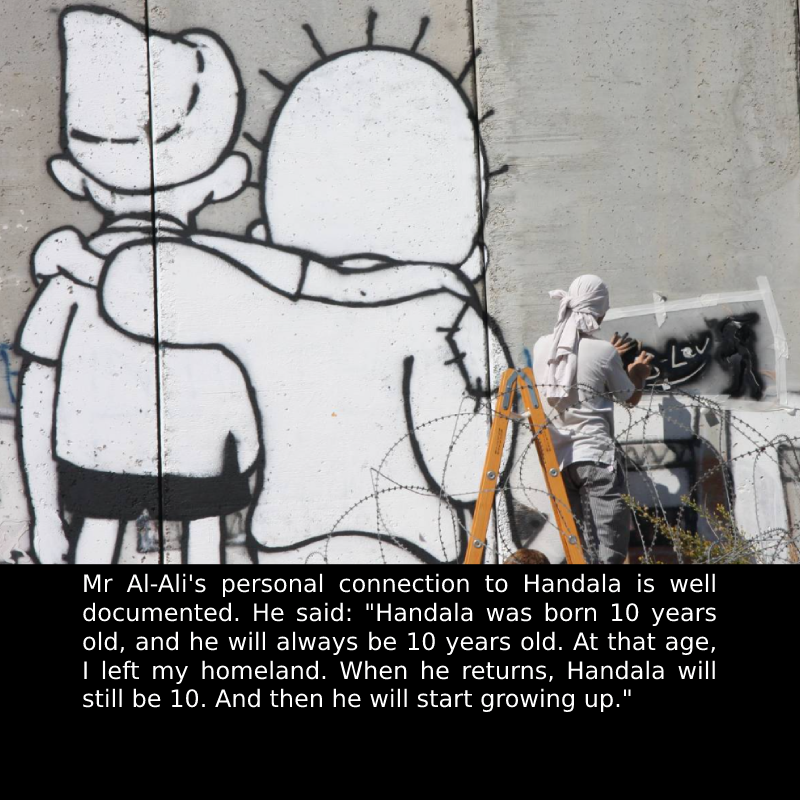
The experience of becoming exiled from his homeland as a child would also directly influence his most famous creation; the character Handala. First appearing in a Kuwaiti newspaper in 1969, Handala was a scruffy, dazed and barefoot 10-year-old Palestinian who represented Ali and other Palestinian children expelled from their homes to make way for the establishment of Israel. Ali once said of Handala: “He was the age I was when I had left Palestine and, in a sense, I am still that age today, and I feel that I can recall and sense every bush, every stone, every house and every tree I passed when I was a child in Palestine.”
From 1973 onwards, the character appeared with his face turned away as a protest against the failure to resolve the plight of Palestinians and to reflect how the world had itself turned its back on them. Handala was depicted facing away ever since. The name Handala comes from the word “handhal”, the Arabic name for a bitter-tasting plant native to Palestine, aptly chosen to represent the embittered Palestinian child. (Photo: Wikimedia)
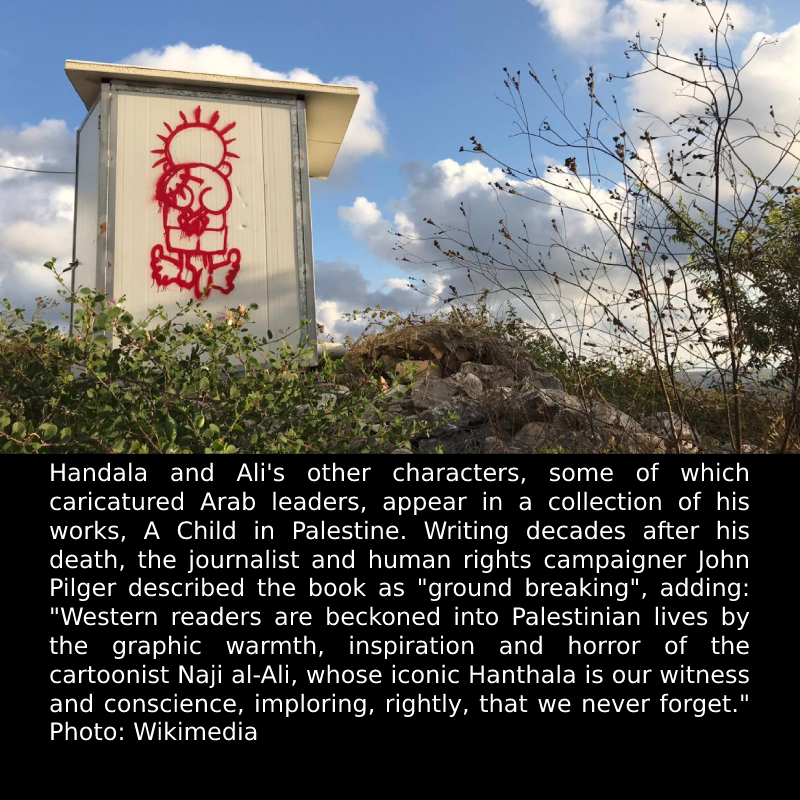
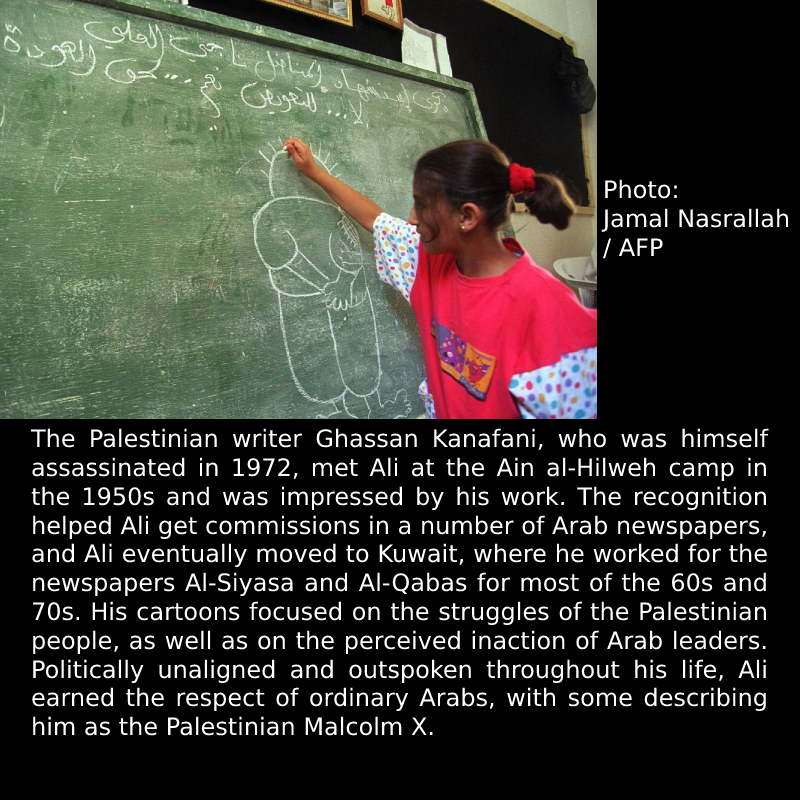
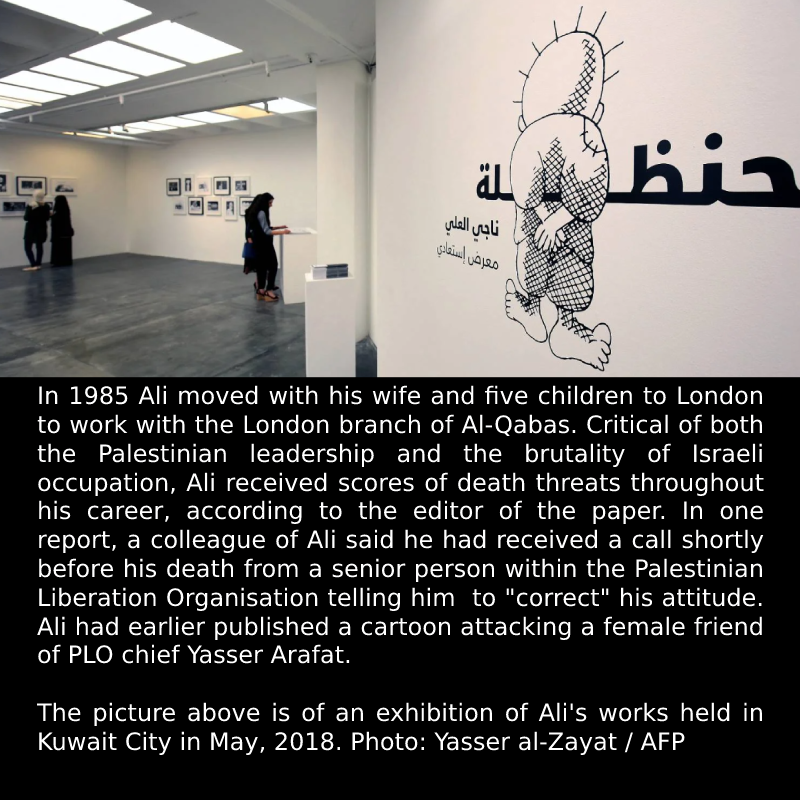
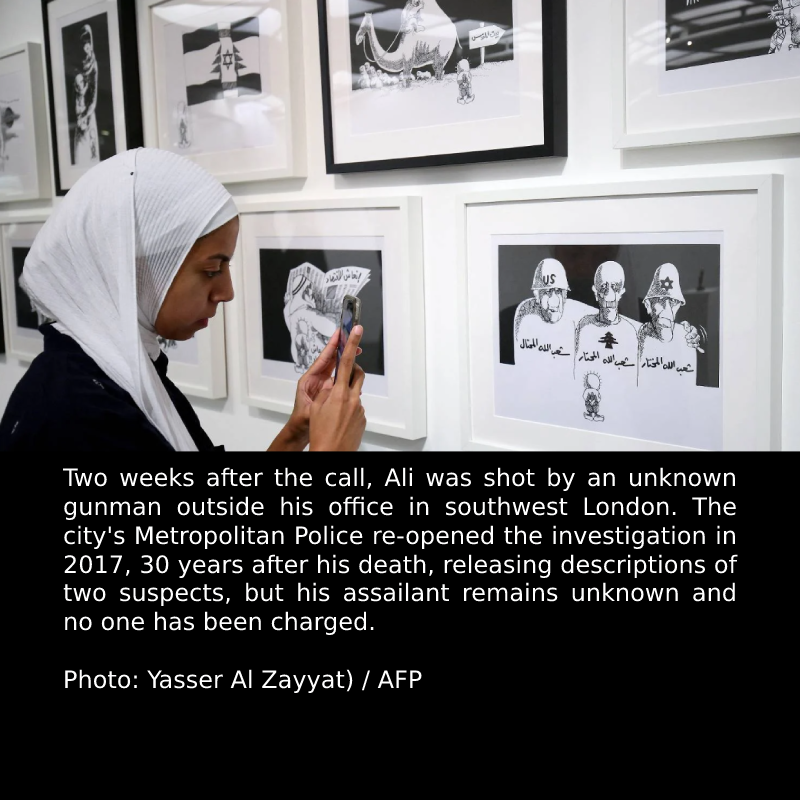
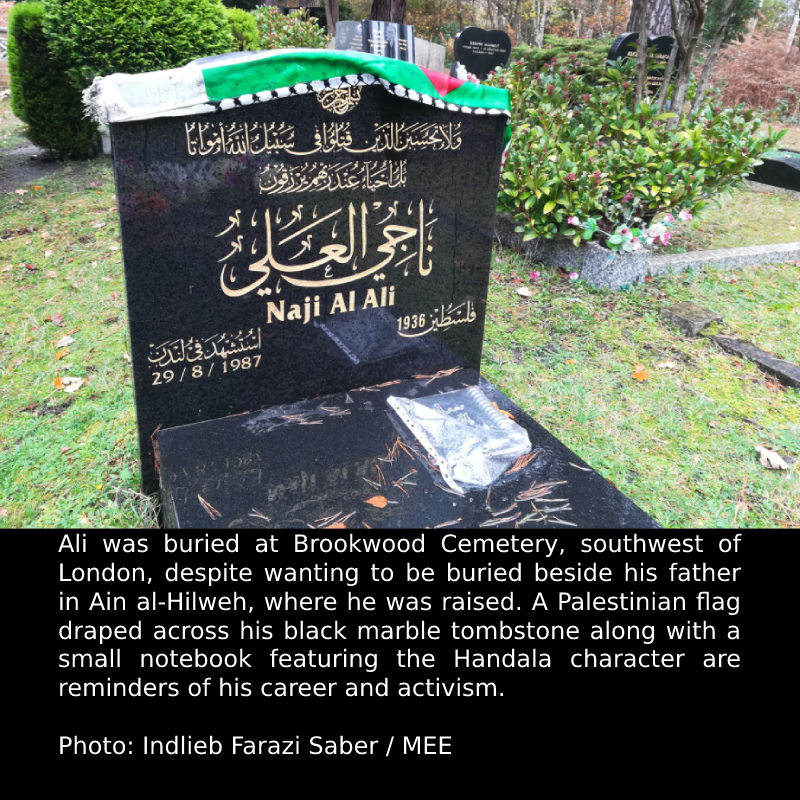
Article taken from Middle East Eye. 1 September 2022.
RELATED:
PGPF organised Handala Bring Him Home! an awareness programme for Palestine in the form of an exhibition held at the Central Market, Kuala Lumpur.
Highlighted was Handala, a cartoon figure symbolising the Palestinians’ right of return since their forced exodus on 15 May 1948.
The exhibition also focused on al-Nakba (the Catastrophe), ethnic cleansing of Palestine which creates refugee crises and the UN partition plan which has been used as pretense for taking over most of Palestine.